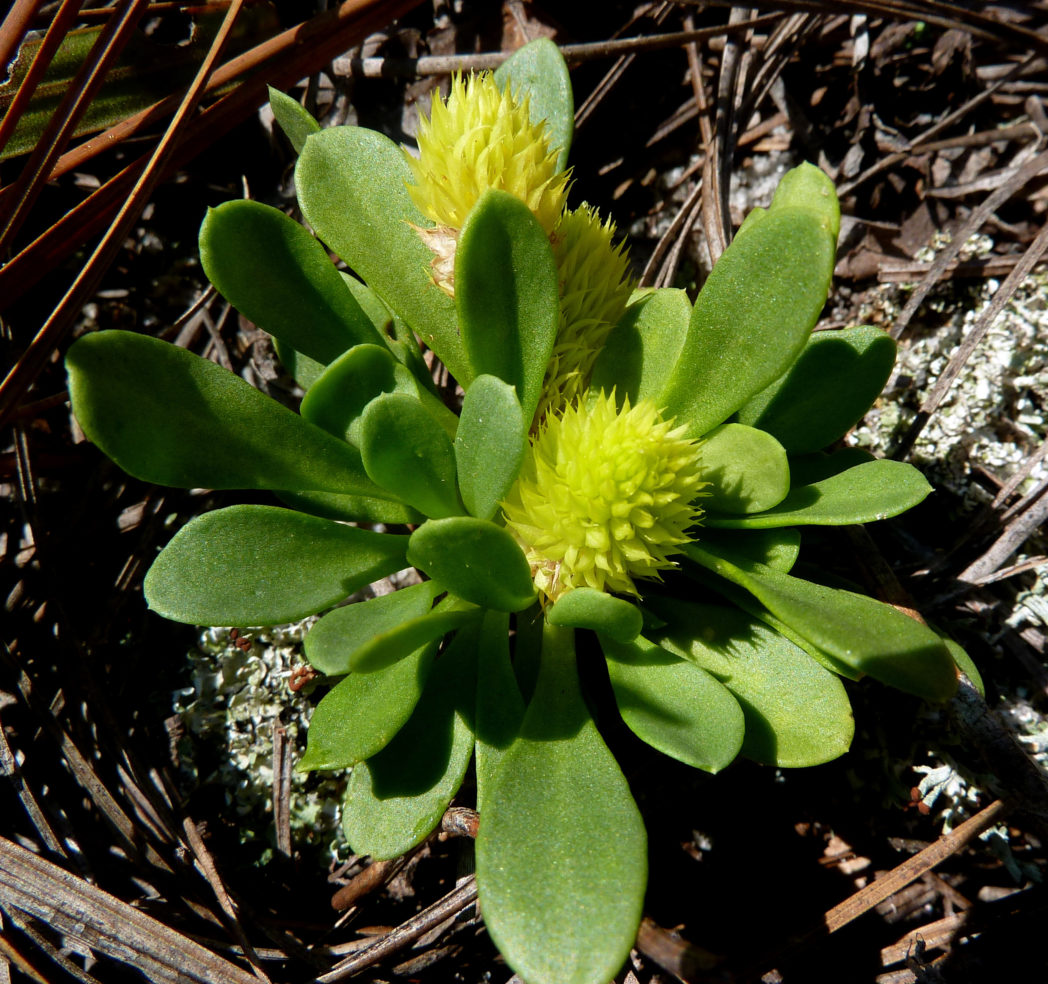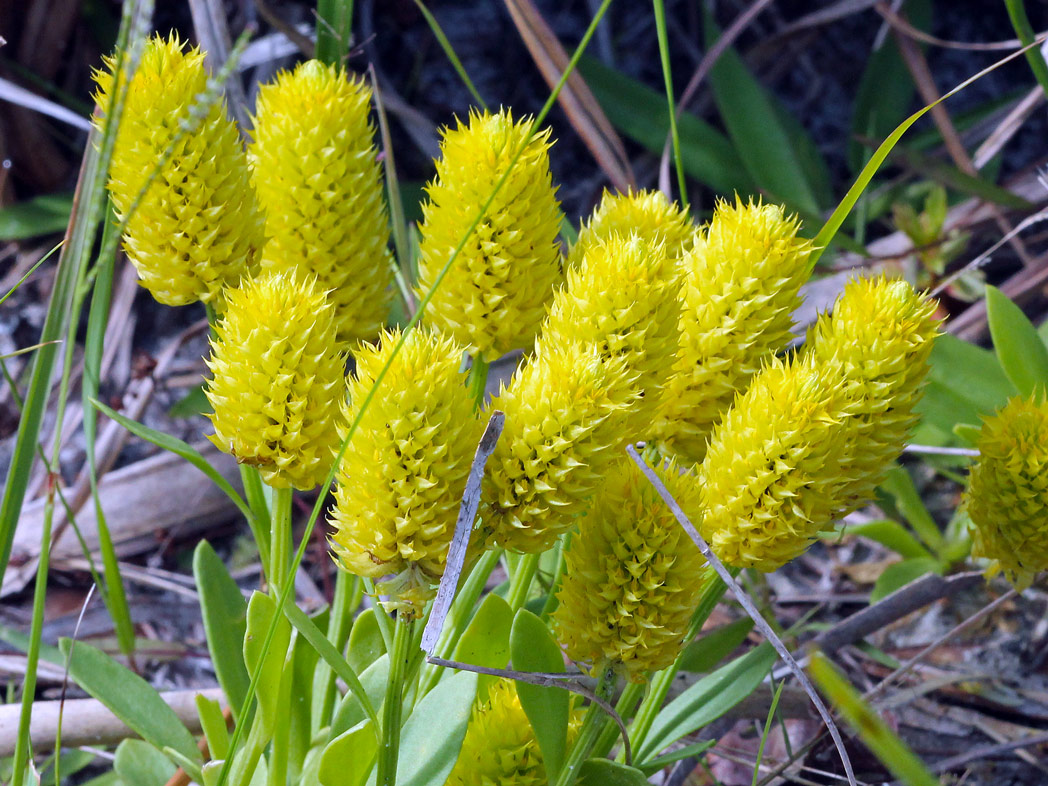Candyroot
Pictured above: Candyroot (Polygala nana) by Mary Keim. Click on terms for botanical definitions. View post as a PDF.
Candyroot is an annual herbaceous wildflower found in wet to moist pine flatwoods, wet prairies and coastal swales. It typically blooms in late spring through summer, but can bloom year-round. Its seeds are spread almost exclusively by ants. The seeds contain elaisomes — fleshy, oil- and protein-rich structures. Ants collect the seeds and take them to their nest where they and their larva consume the elaisomes, but leave the seed intact. The seeds are then tossed from the nest into favorable germinating conditions.
Candyroot’s distinctive inflorescence is a compact, thimble-shaped raceme comprised of many tiny pale to lemon-yellow flowers. Leaves are thick, spatulate and curl slightly upright. They are mostly in basal rosettes. Stem leaves are few and alternately arranged. Stems are glabrous. Seeds are born in capsules.

The name Polygala comes from the Greek polys, which means “many or much,” and gala, which means “milk.” It is so-named because it was once believed that the presence of Polygala species in cow fields would result in higher milk production (hence the common name of “milkwort” for both the genus and family). The species name nana is from the Greek nânos or “dwarf,” and refers to the plant’s small habit. The plant’s root has a licorice flavor when chewed, hence the common name “candyroot.” Like other species of Polygala, it is sometimes referred to as bachelor’s buttons.
Family: Polygalaceae (Milkwort family)
Native range: Nearly throughout
To see where natural populations of candyroot have been vouchered, visit florida.plantatlas.usf.edu.
Hardiness: Zones 8A–10B
Soil: Moist to wet well-drained soils
Exposure: Full sun to minimal shade
Growth habit: 3–6” tall
Garden tips: Despite candyroot’s common presence throughout the state, it is not commercially cultivated and does not persist in the landscape. Look for it in its natural setting.
For more information on other Polygala species, see these resources:

